
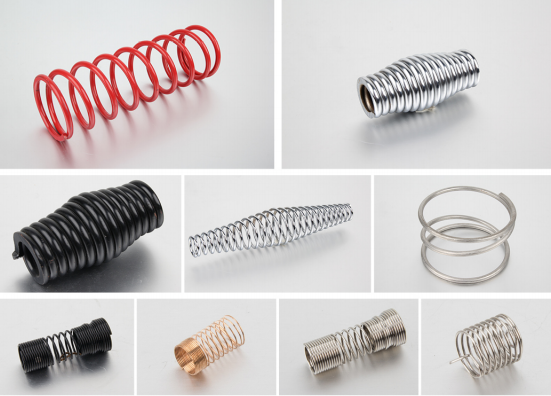
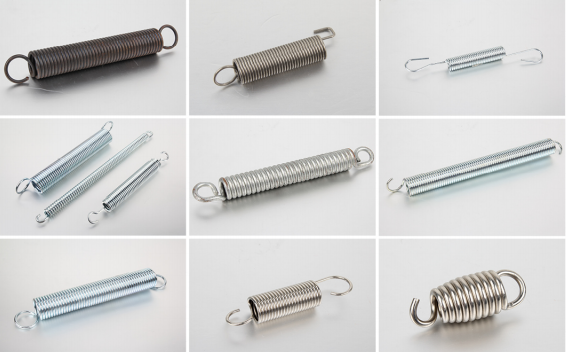
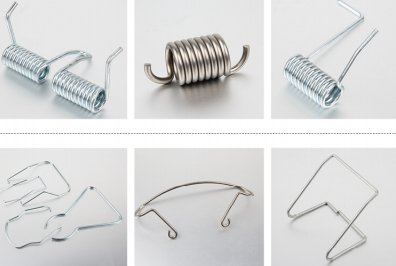
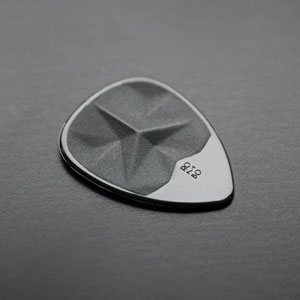
Nuestros resortes están diseñados para cumplir con especificaciones exactas., asegurando un rendimiento y confiabilidad superiores.

Del acero inoxidable a las aleaciones especializadas, Trabajamos con una variedad de materiales para satisfacer sus necesidades..

Si necesita resortes de compresión, resortes de torsión, resortes de extensión, o formas de alambre, entregamos soluciones personalizadas.

El precio directo de fábrica garantiza que usted obtenga el mejor valor por una calidad de primer nivel..
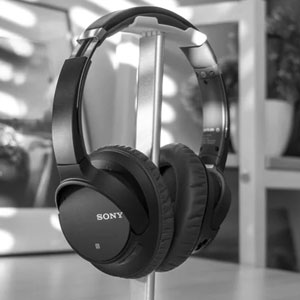
Los procesos optimizados nos permiten entregar sus pedidos a tiempo, cada vez.

Manejamos eficientemente la logística internacional para entregar en cualquier parte del mundo..
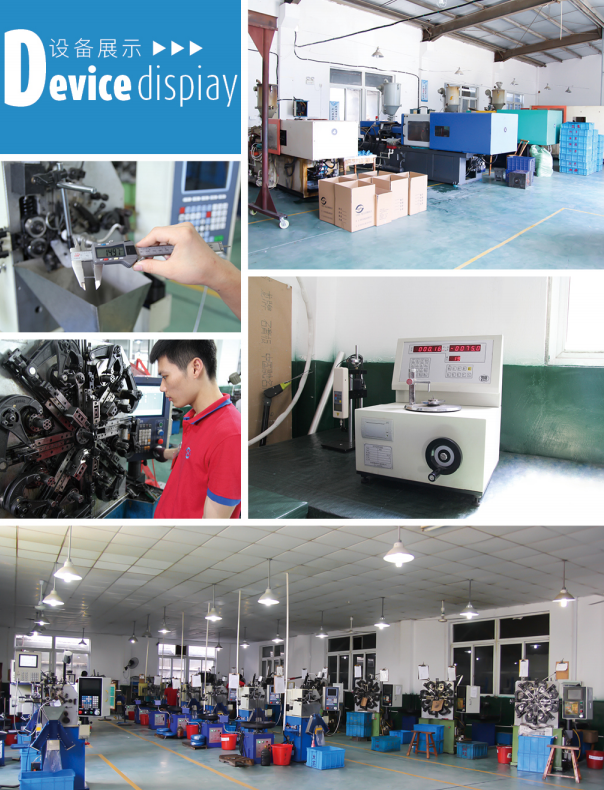
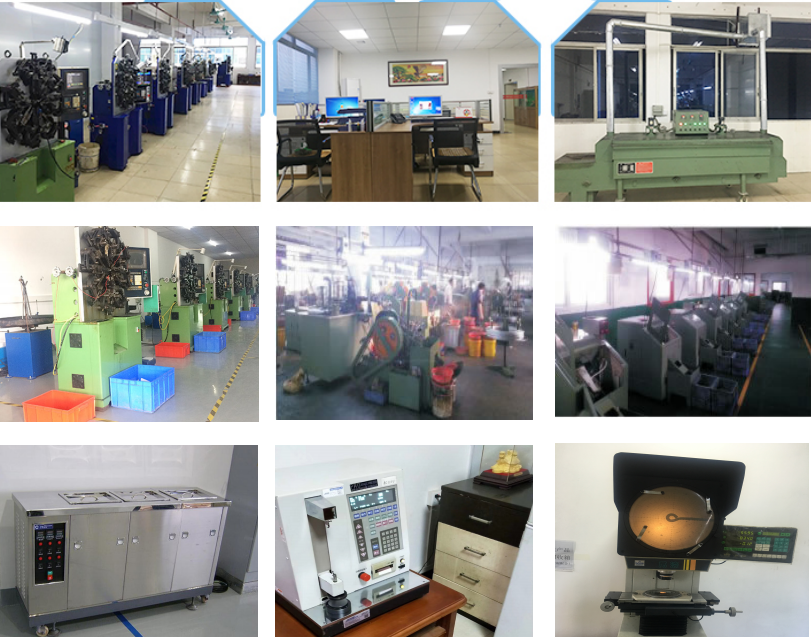
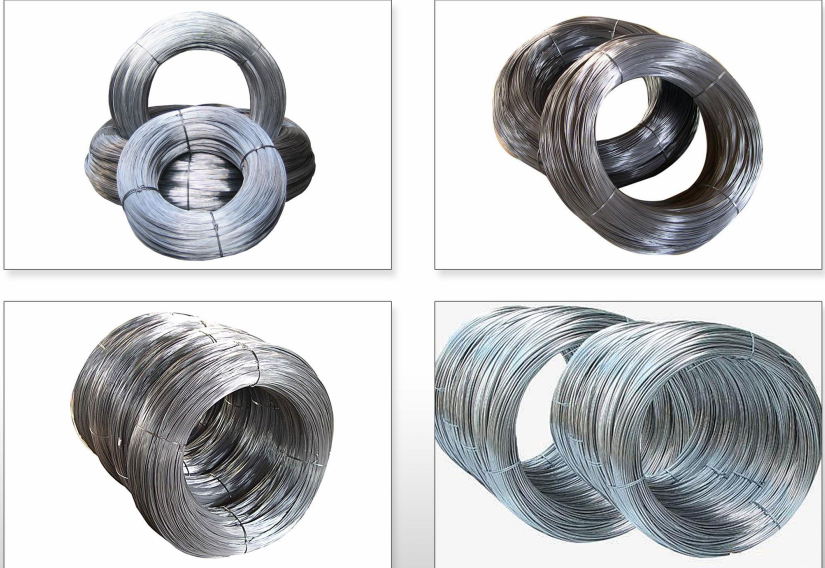
Los resortes son los héroes no reconocidos en muchas industrias, proporcionando la flexibilidad, fortaleza, y precisión necesaria para innumerables aplicaciones. Ya sea que esté diseñando maquinaria de alto rendimiento o herramientas cotidianas, Seleccionar el material correcto garantiza la confiabilidad, durabilidad, y rentabilidad. Desglosemos los elementos esenciales para ayudarlo a tomar una decisión informada!
Los aceros de primavera son increíblemente populares debido a su combinación de elasticidad, resistencia a la tracción, y resistencia a la fatiga. Son ideales para aplicaciones donde los resortes están bajo estrés o carga constante..
If your application involves exposure to moisture, chemicals, or extreme weather, stainless steel is your go-to material. These alloys are resistant to rust and ensure long-lasting performance.
A veces, Su aplicación requiere algo extra. Ahí es donde entran materiales especializados como superalloys y compuestos de alta resistencia.
Caso 1: Fabricante de equipos marinos
Un cliente que diseñaba resortes para aplicaciones en aguas profundas eligió 316L acero inoxidable por su resistencia superior a la corrosión del agua salada. Esta decisión duplicó la vida útil de sus productos y redujo los costos de mantenimiento al 30%.
Caso 2: Constructor de maquinaria pesada
Un fabricante de prensas industriales cambió a Acero de aleación SWP por sus resortes de tensión. El resultado? Los resortes resistieron 20% cargas más altas y duradas 50% más tiempo en funcionamiento continuo.
Caso 3: Inicio de procesamiento de alimentos
Para resortes en cortadoras de alimentos, 304 acero inoxidable fue la elección perfecta debido a su asequibilidad y cumplimiento de los estándares de seguridad alimentaria.. La startup guardada 15% sobre costos al tiempo que garantiza el rendimiento higiénico.
| Serial No. | Grado de acero | do (%) | Y (%) | Minnesota (%) | CR (%) | Mes (%) | V (%) | B (%) | En (%) | Cu (%) | PAG (%) | S (%) |
|---|---|---|---|---|---|---|---|---|---|---|---|---|
| 1 | 65 | 0.62–0.70 | 0.17–0.37 | 0.50–0.80 | ≤ 0.25 | - | - | - | 0.25 | 0.25 | ≤ 0.035 | ≤ 0.035 |
| 2 | 70 | 0.62–0.75 | 0.17–0.37 | 0.50–0.80 | ≤ 0.25 | - | - | - | 0.25 | 0.25 | ≤ 0.035 | ≤ 0.035 |
| 3 | 85 | 0.72–0.85 | 0.17–0.37 | 0.50–0.80 | ≤ 0.25 | - | - | - | 0.25 | 0.25 | ≤ 0.035 | ≤ 0.035 |
| 4 | 65Minnesota | 0.62–0.70 | 0.17–0.37 | 0.90–1.20 | ≤ 0.25 | - | - | - | 0.25 | 0.25 | ≤ 0.035 | ≤ 0.035 |
| 5 | 55Si2mn | 0.52–0.60 | 1.50–2.00 | 0.60–0.90 | ≤ 0.35 | - | - | - | 0.35 | 0.35 | ≤ 0.035 | ≤ 0.035 |
| 6 | 55To2mnb | 0.52–0.60 | 1.50–2.00 | 0.60–0.90 | ≤ 0.35 | - | - | 0.0005–0.004 | 0.35 | 0.35 | ≤ 0.035 | ≤ 0.035 |
| 7 | 55Si2mn etc. | 0.52–0.60 | 0.70–1.00 | 1.00–1.30 | ≤ 0.35 | - | 0.08–0.16 | 0.0005–0.0035 | 0.35 | 0.35 | ≤ 0.035 | ≤ 0.035 |
| 8 | 60Si2mn | 0.56–0.64 | 1.50–2.00 | 0.60–0.90 | ≤ 0.35 | - | - | - | 0.35 | 0.35 | ≤ 0.035 | ≤ 0.035 |
| 9 | 60Si2MNA | 0.56–0.64 | 1.60–2.00 | 0.60–0.90 | ≤ 0.35 | - | - | - | 0.35 | 0.35 | ≤ 0.035 | ≤ 0.030 |
| 10 | 60Si2cra | 0.56–0.64 | 1.40–1.80 | 0.40–0.70 | 0.70–1.00 | - | - | - | 0.25 | 0.25 | ≤ 0.035 | ≤ 0.030 |
| 11 | 55Gusano | 0.56–0.64 | 1.40–1.80 | 0.40–0.70 | 0.90–1.20 | - | 0.10–0.20 | - | 0.25 | 0.25 | ≤ 0.035 | ≤ 0.035 |
| 12 | 60Crmna | 0.56–0.64 | 0.17–0.37 | 0.70–1.00 | 0.70–1.00 | - | - | - | 0.25 | 0.35 | ≤ 0.035 | ≤ 0.035 |
| 13 | 50Gusano | 0.46–0.54 | 0.17–0.37 | 0.50–0.80 | 0.80–1.10 | - | 0.10–0.20 | - | 0.25 | 0.25 | ≤ 0.035 | ≤ 0.035 |
| 14 | 30CVV2A | 0.26–0.34 | 0.17–0.37 | ≤ 0.40 | 2.00–2.50 | - | 0.50–0.80 | 4.4–5.0 | 0.35 | 0.35 | ≤ 0.035 | ≤ 0.035 |
El tratamiento térmico de primavera es fundamental para optimizar las propiedades mecánicas., asegurando durabilidad, y mejorar la resistencia a la fatiga. Varias técnicas de fortalecimiento., como apagar, templado, y tratamientos superficiales, se aplican según el tipo de material y los requisitos de aplicación.
El proceso de tratamiento térmico de resortes se puede clasificar en tres tipos:
El proceso de enfriamiento garantiza una transformación martensítica uniforme., seguido de templado para aliviar el estrés y mejorar la dureza. Técnicas como el templado isotérmico mejoran aún más la plasticidad y la tenacidad., Asegurar que el resorte mantenga la precisión dimensional y la estabilidad mecánica..
| Tipo de proceso | Descripción | Materiales utilizados | Efectos clave |
|---|---|---|---|
| Temple & Templado | Calentamiento por encima de Ac3, tenencia, luego enfriamiento y templado rápidos. | Acero con alto contenido de carbono, acero aleado | Aumenta la fuerza, dureza, y elasticidad. |
| Fortalecimiento del trabajo en frío | Utiliza deformación mecánica en lugar de tratamiento térmico.. | alambre de acero inoxidable, tiras de acero laminado en frío | Mejora las propiedades de endurecimiento por trabajo.. |
| Tratamiento de envejecimiento | Estabilización térmica adicional después del procesamiento inicial. | Ciertos materiales de aleación | Mejora la estabilidad y la fuerza.. |
| Enfriamiento isotérmico | Mantiene la temperatura por encima de Ms., se enfría en sal fundida. | Acero con alto contenido de carbono, resortes de aleación | Mejora la dureza y la plasticidad.. |
| Templado controlado | Enfriamiento gradual para evitar la deformación.. | Muelles de precisión, componentes mecanicos | Reduce el estrés interno y garantiza la precisión.. |
Este enfoque estructurado garantiza que cada método de tratamiento térmico esté alineado con las propiedades específicas del material y los requisitos de aplicación para un rendimiento optimizado..
El tratamiento térmico de los manantiales.:
| Método | Descripción del proceso | Beneficios clave | Aplicaciones comunes |
|---|---|---|---|
| Tratamiento térmico convencional | Calentamiento y enfriamiento de acero para ajustar las propiedades mecánicas. | Aumenta la fuerza, elasticidad, y durabilidad | Resortes de acero con contenido de carbono medio a alto. |
| Tratamiento de endurecimiento superficial | Carburación, nitruración, o endurecimiento por inducción de la capa exterior | Mejora la resistencia al desgaste manteniendo la dureza del núcleo. | Resortes automotrices e industriales. |
| Envejecimiento & Templado | Tratamiento térmico para aliviar las tensiones internas y refinar la microestructura. | Mejora la estabilidad y la consistencia mecánica. | Muelles de precisión y alta carga. |
| Grado de acero | Temperatura de austenitización (°C) | Temperatura de enfriamiento isotérmica (°C) | Tiempo de enfriamiento (mín.) | Dureza (CDH) |
|---|---|---|---|---|
| 65 | 820 ± 10 | 320 – 340 | 15 – 20 | 46 – 48 |
| 60Si2MNA | 870 ± 10 | 260 | 20 – 25 | 50 – 52 |
| 50Gusano | 850 ± 10 | 300 | 20 – 25 | 55 – 57 |
| Tipo de acero | Proceso de tratamiento térmico | Dureza (CDH) | Resistencia a la tracción (MPa) | Fuerza de producción (MPa) | Alargamiento (%) | Resistencia al impacto (J/cm²) |
|---|---|---|---|---|---|---|
| 50Gusano | Temple convencional + Templado | 48 | 1750 | 1500 | 10 | 44 |
| 60Si2MNA | Enfriamiento isotérmico + Templado | 47 | 1900 | 1750 | 11 | 46 |
| 65Si2MnWA | Enfriamiento isotérmico + Templado | 50 | 2100 | 1980 | 9 | 43 |
Este formato de tabla proporciona una comparación clara y organizada de diferentes técnicas de tratamiento térmico para resortes..

Xiamen Linspring pudo fabricar mi pedido personalizado según las especificaciones y fue útil y comunicativo a lo largo del camino. La calidad del producto entregado fue buena..

Este fue mi segundo pedido con Linspring. Es genial comunicarse con el vendedor y los resortes fueron perfectos.,como el primer pedido. Gracias por tu aviso,cortés.

Muy contento con nuestros resortes personalizados.. A tiempo y el envío fue rápido.



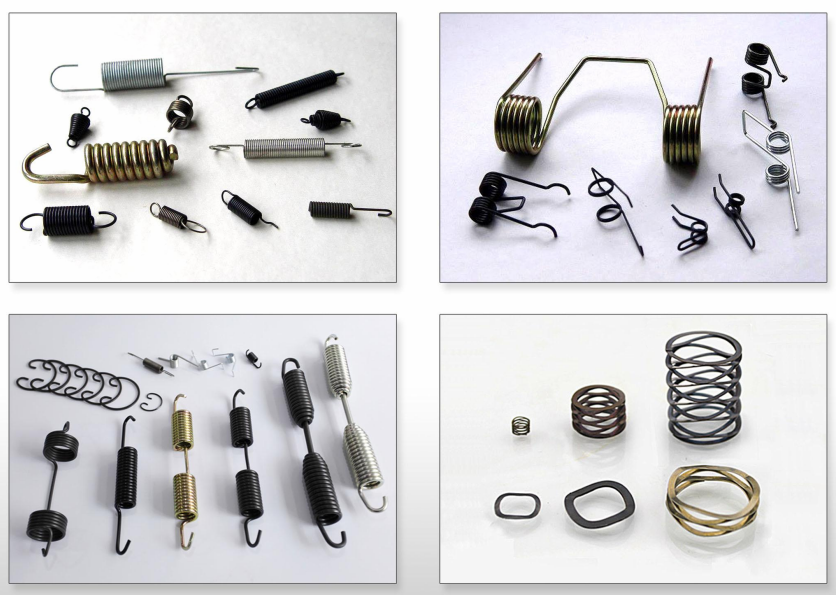
Los resortes son componentes esenciales en innumerables industrias., desde automoción y aeroespacial hasta dispositivos médicos y electrodomésticos. Muelles personalizados, En particular, Ofrecer soluciones personalizadas para cumplir con requisitos específicos de rendimiento., tamaño, material, y aplicación. El diseño de un resorte personalizado requiere una cuidadosa consideración de numerosos factores, De la funcionalidad a las condiciones ambientales..
Resortes de compresión
Resortes de tensión
Resortes de torsión
Resortes planos
Resortes especiales
Elegir el material adecuado es fundamental para el rendimiento y la durabilidad de un resorte personalizado.. Algunos materiales comunes incluyen:
Acero carbono
Acero inoxidable
Acero aleado
Fosfor bronce y cobre de berilio
Titanio
Inconel y otras superalloys
Al diseñar un resorte personalizado, Hay varios factores a considerar:
Tipo de primavera: Elija el tipo de resorte apropiado (compresión, tensión, etc.) Basado en la aplicación.
Requisitos de carga:
Dimensiones de primavera:
Selección de material: Elija un material que cumpla con el medio ambiente de la aplicación, fortaleza, y requisitos de durabilidad.
Estrés y fatiga:
Entorno operativo:
Tipo final:
Restricciones de fabricación:
Defina sus requisitos:
Elija un material:
Trabajar con linspring:
Desarrollo prototipo:
Producción final:
Proporcionar especificaciones claras:
Solicitar muestras:
Discutir el cumplimiento:
Leverage Expertise:
Plan for Scalability:
Custom springs are a game-changer for applications that demand precision, performance, and reliability. By carefully considering factors like material, design, and operating environment, you can create a spring that perfectly suits your needs. Partnering with a trusted manufacturer LIKE LINSPRING ensures a seamless process from design to production, helping you achieve optimal results.
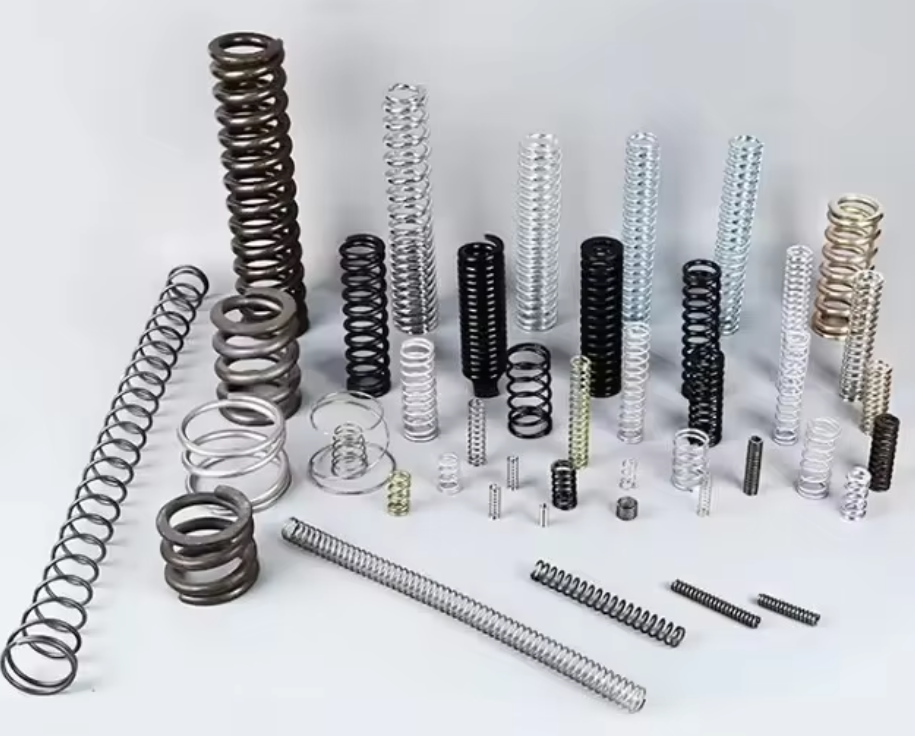
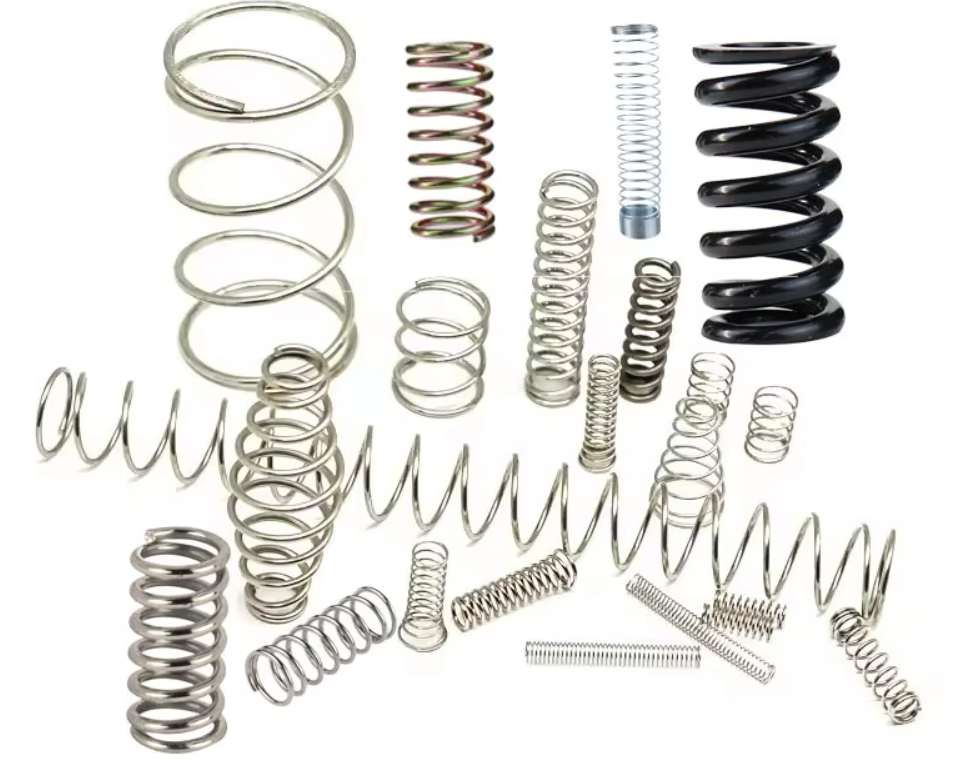
Still unsure which material fits your needs? Let’s discuss your specific application. Whether it’s automotive, aerospace, or precision engineering, Podemos ayudarle a seleccionar el material perfecto adaptado a sus necesidades..
¿Le gustaría recibir una recomendación personalizada o profundizar en uno de los materiales?? Hagamos de tu proyecto un éxito!
Correo electrónico: sales@linspring.net
Teléfono:+86-13599531763
DIRECCIÓN: Unidad 502, piso 5, Edificio B, # 1 taller, Centro de soporte de repuestos de Auto Industry City (fase iv), Ciudad de Guankou, Distrito de Jimei, Xiamén,fujián,Porcelana
Nos comunicaremos con usted dentro 1 jornada laboral.